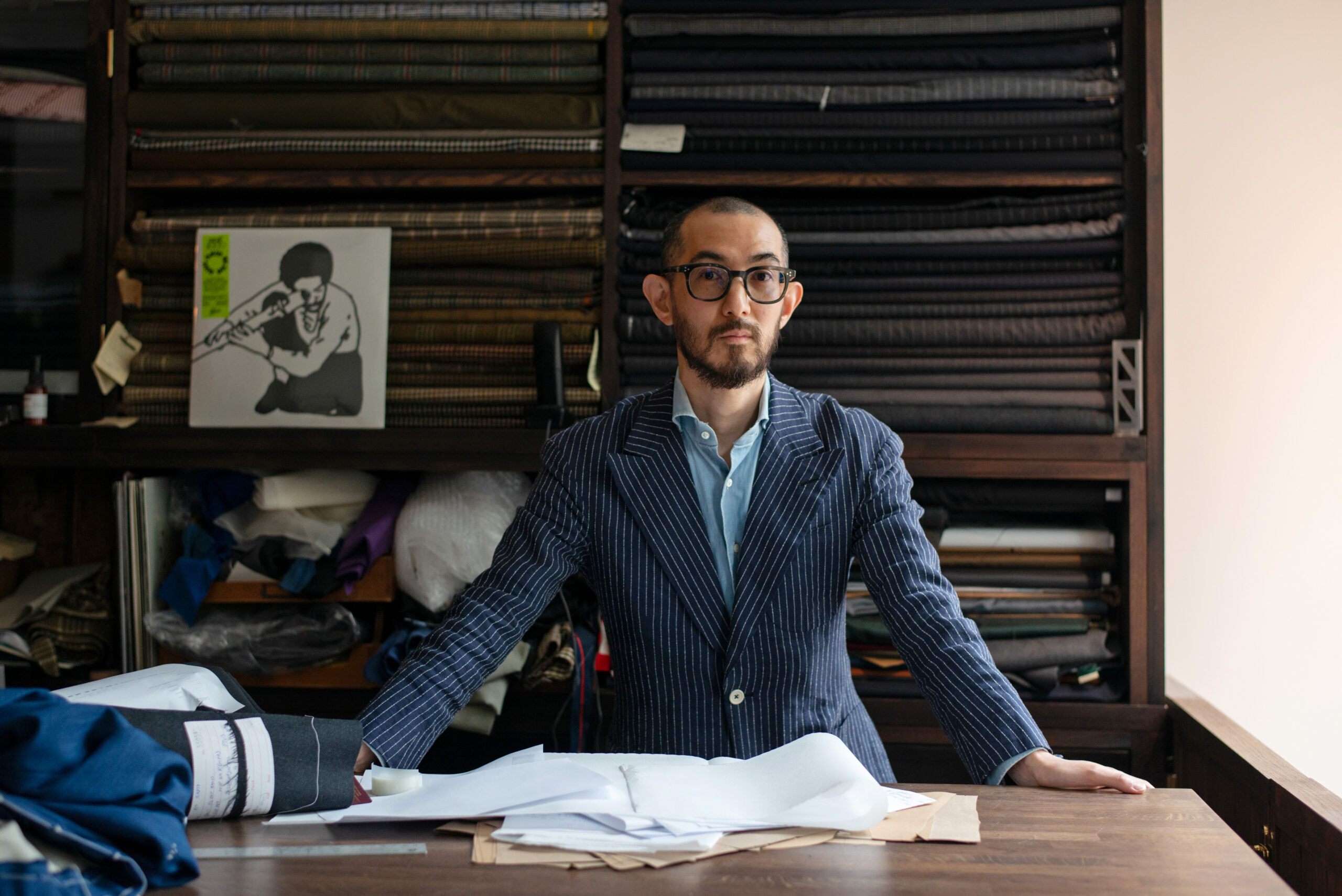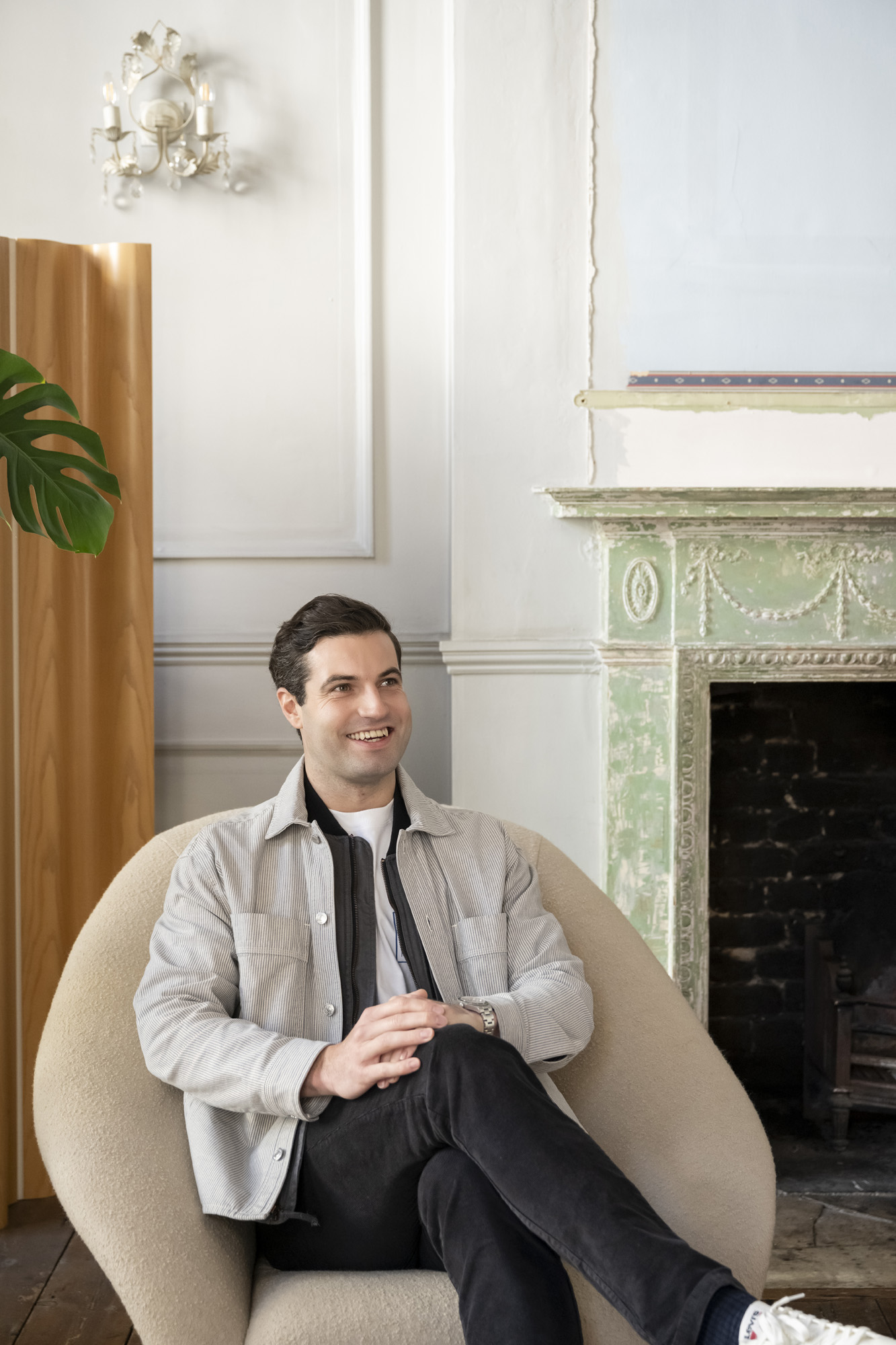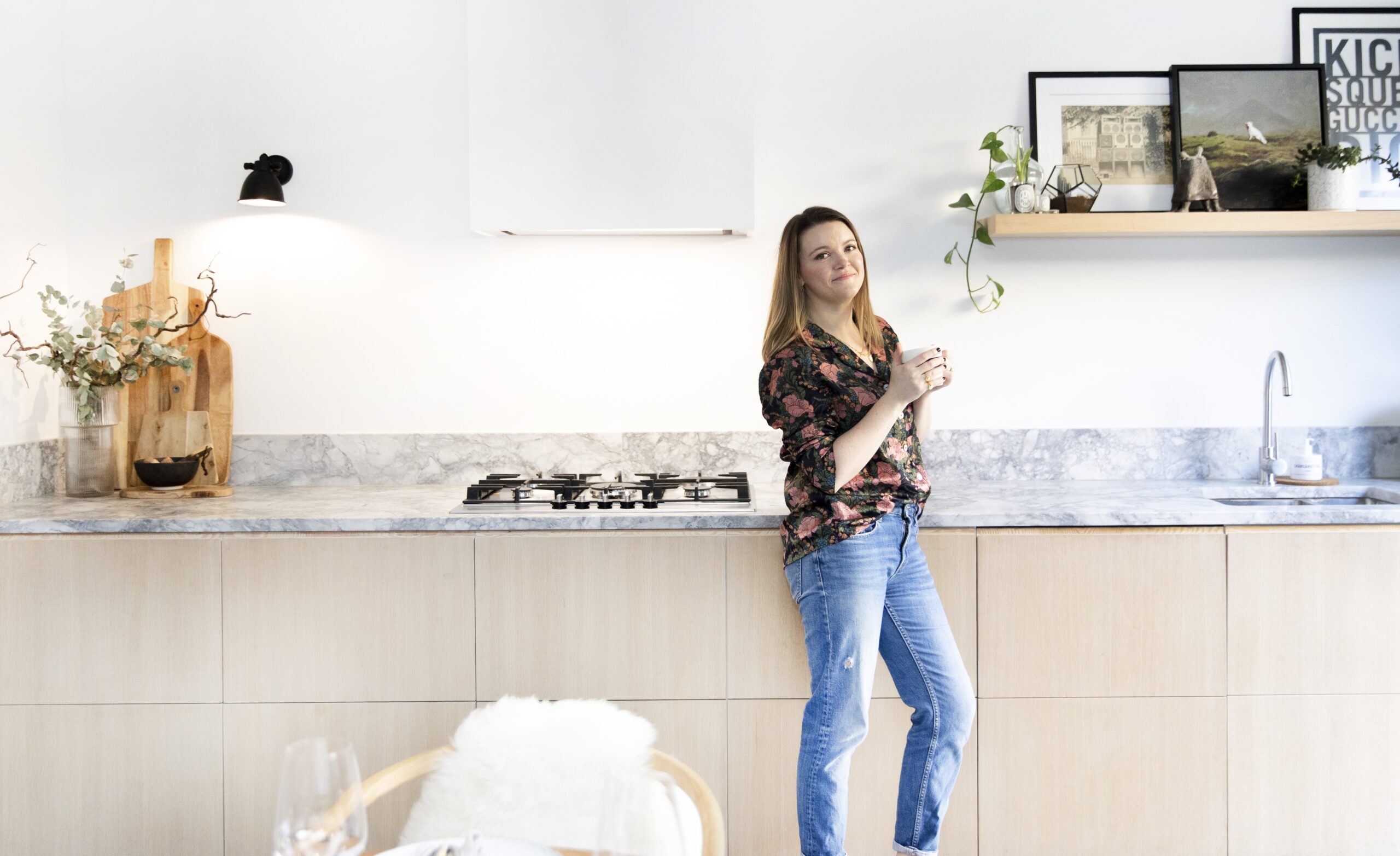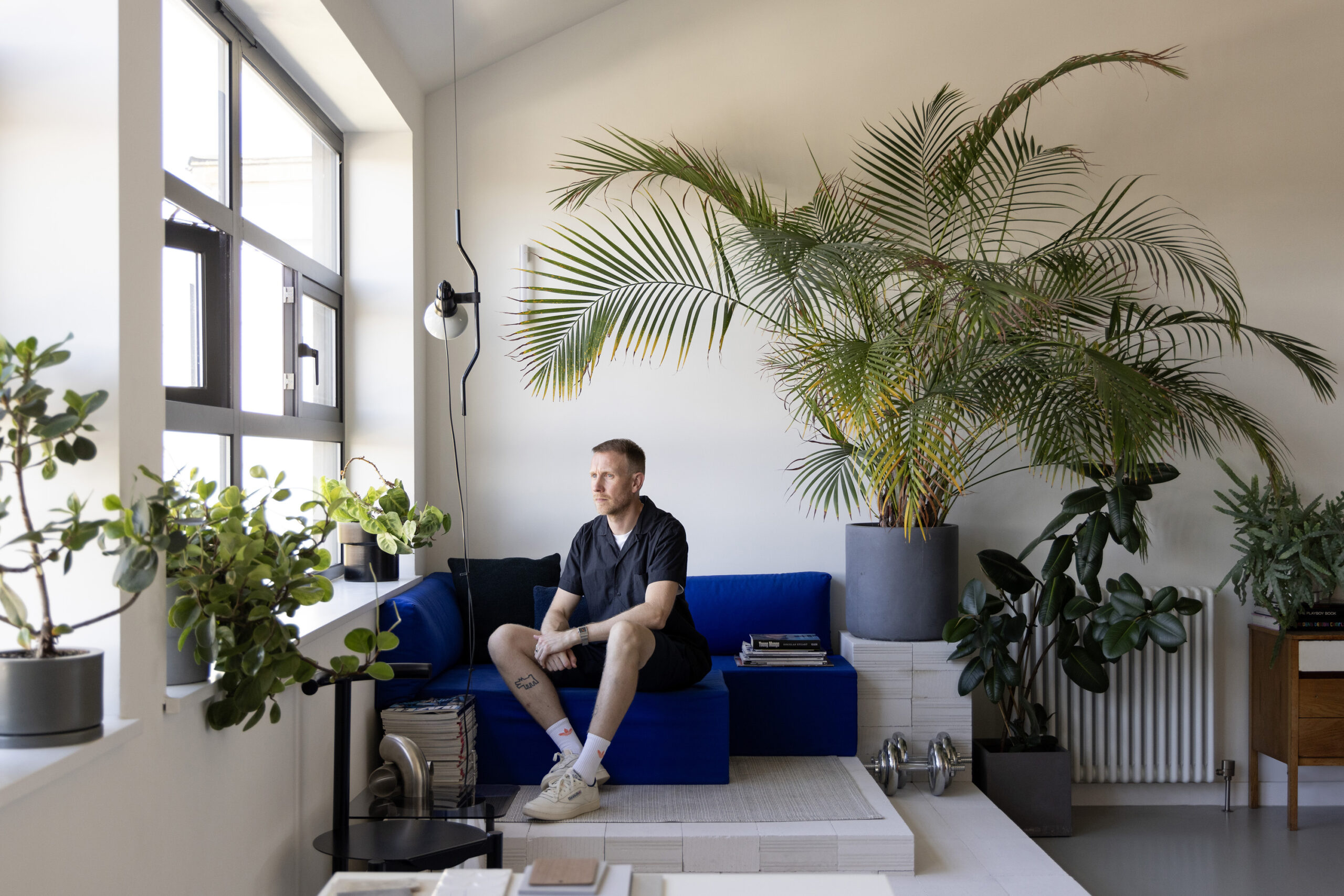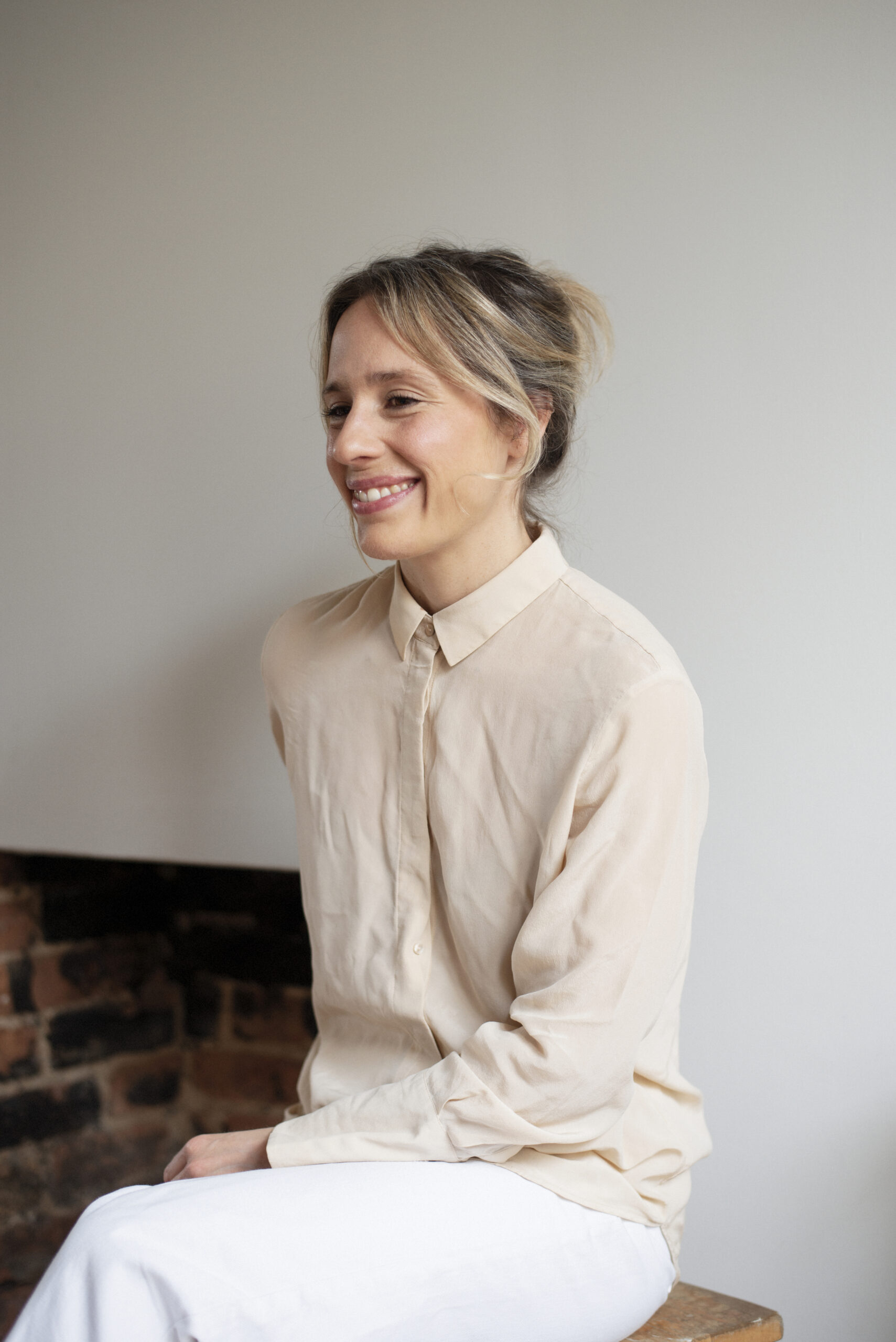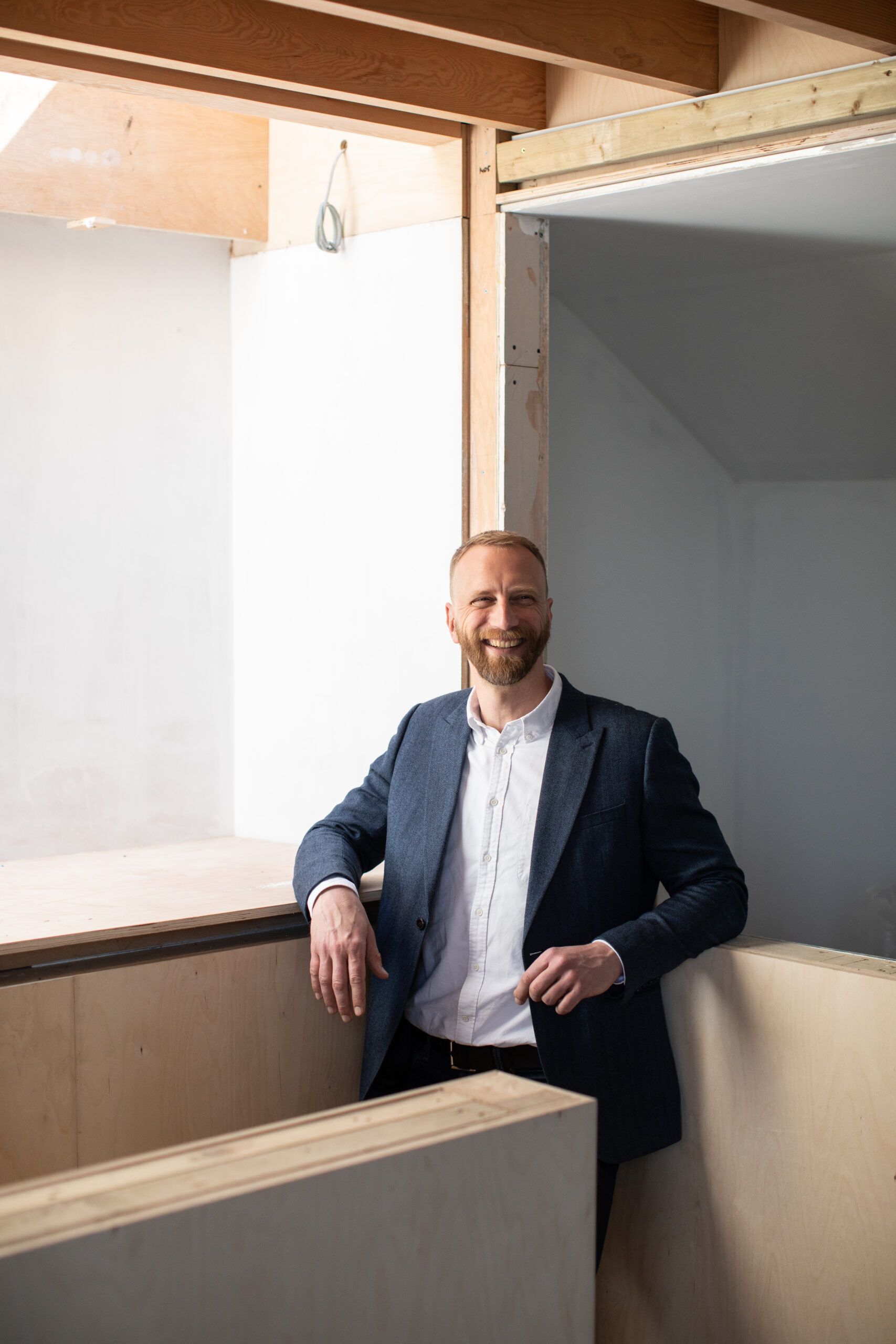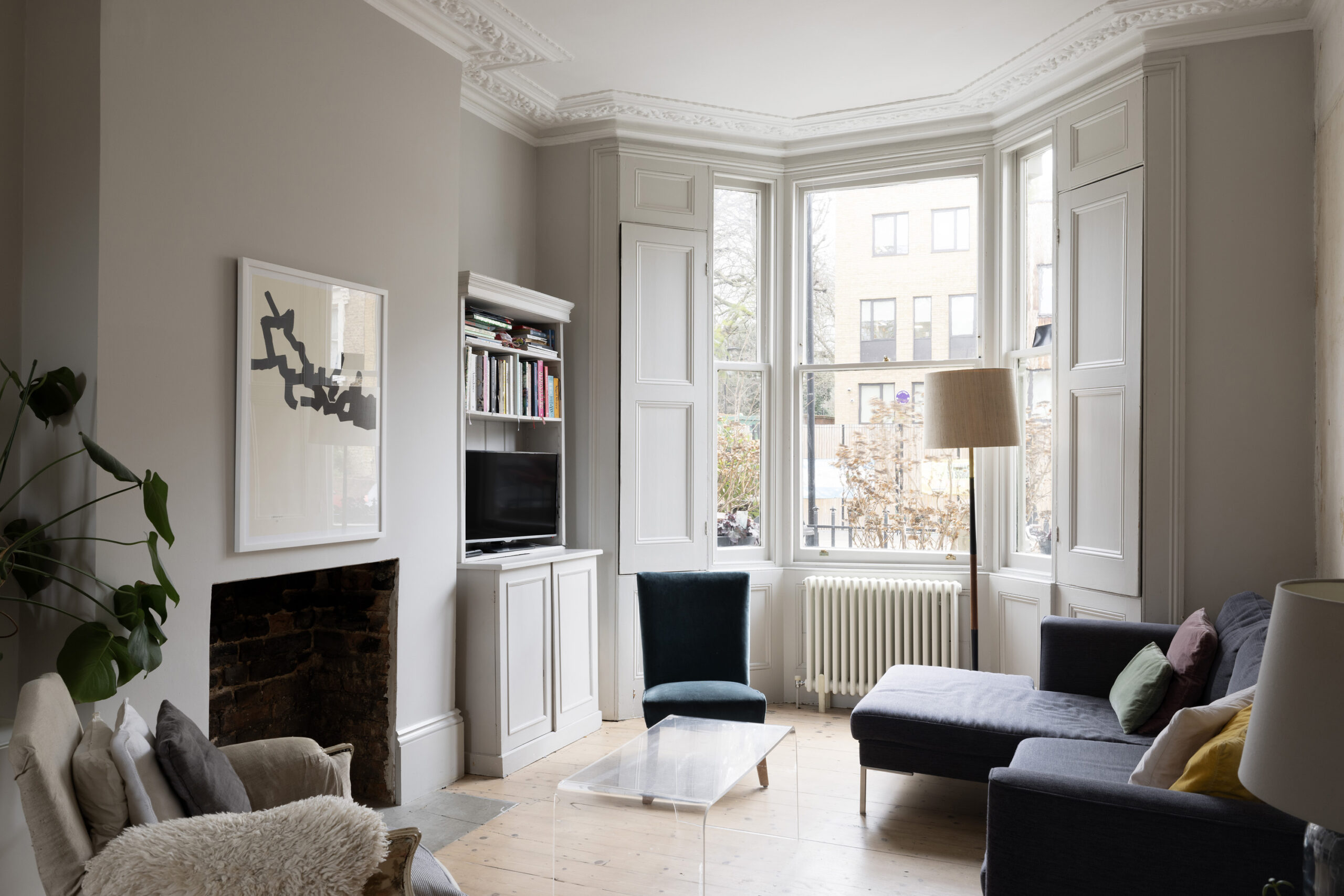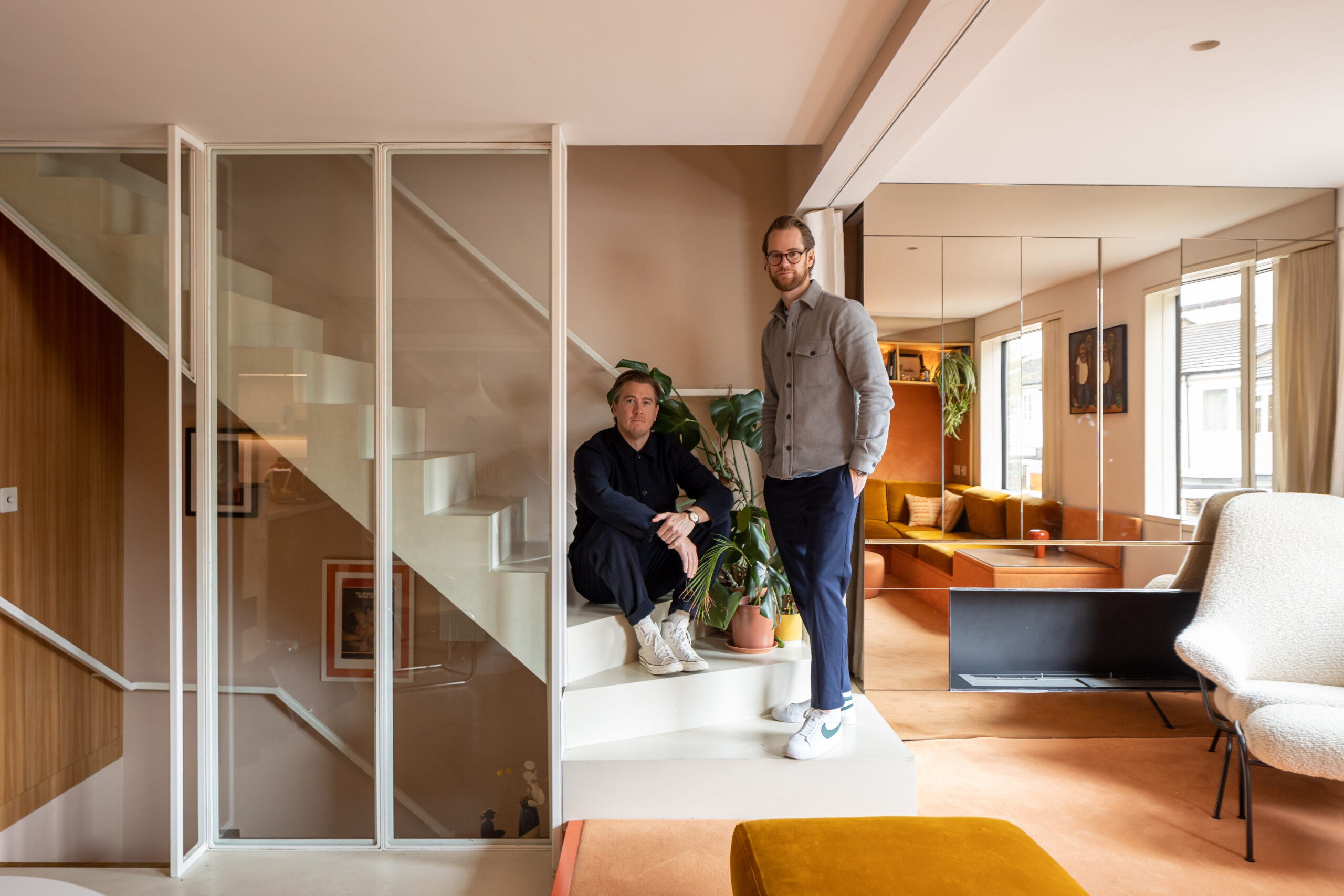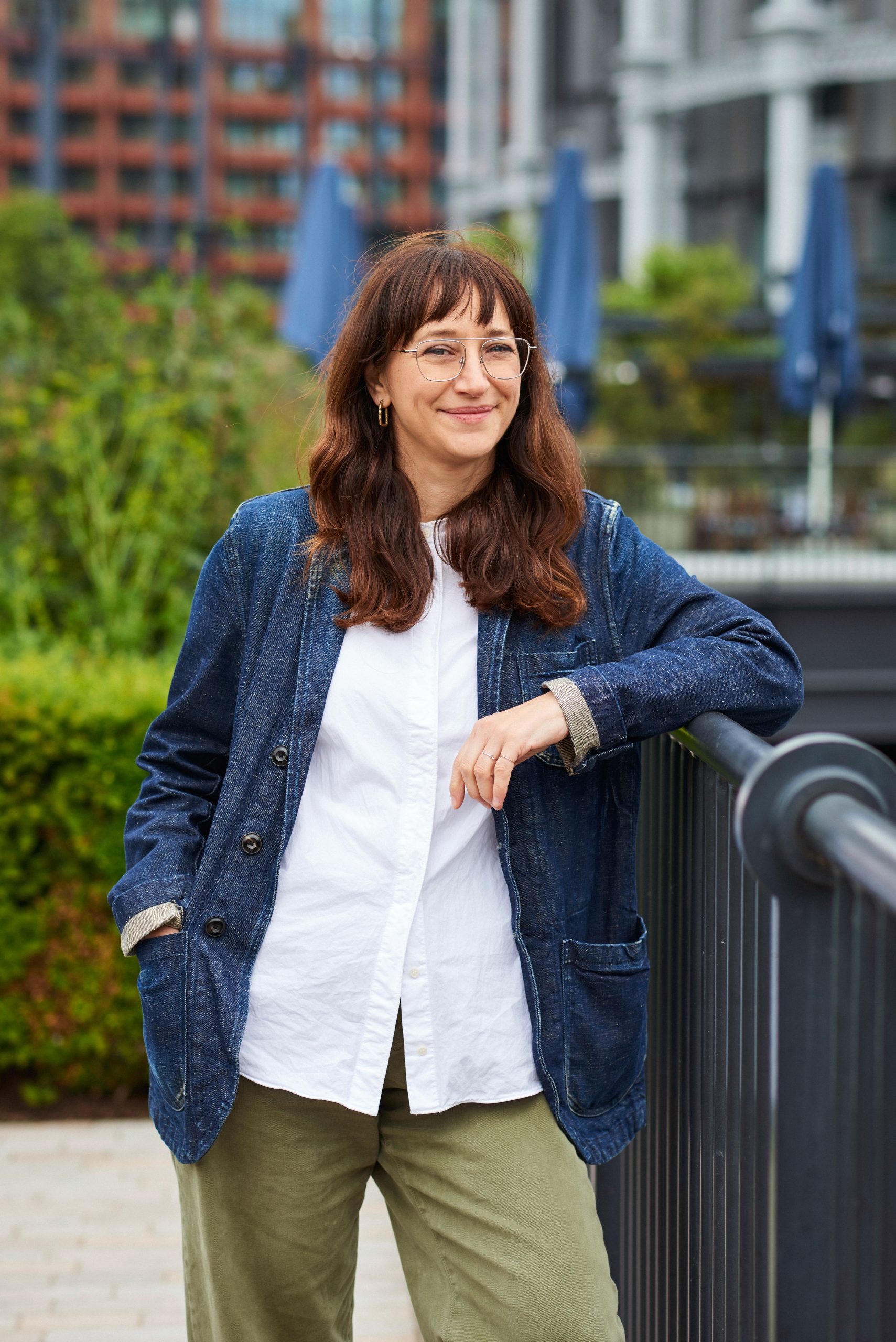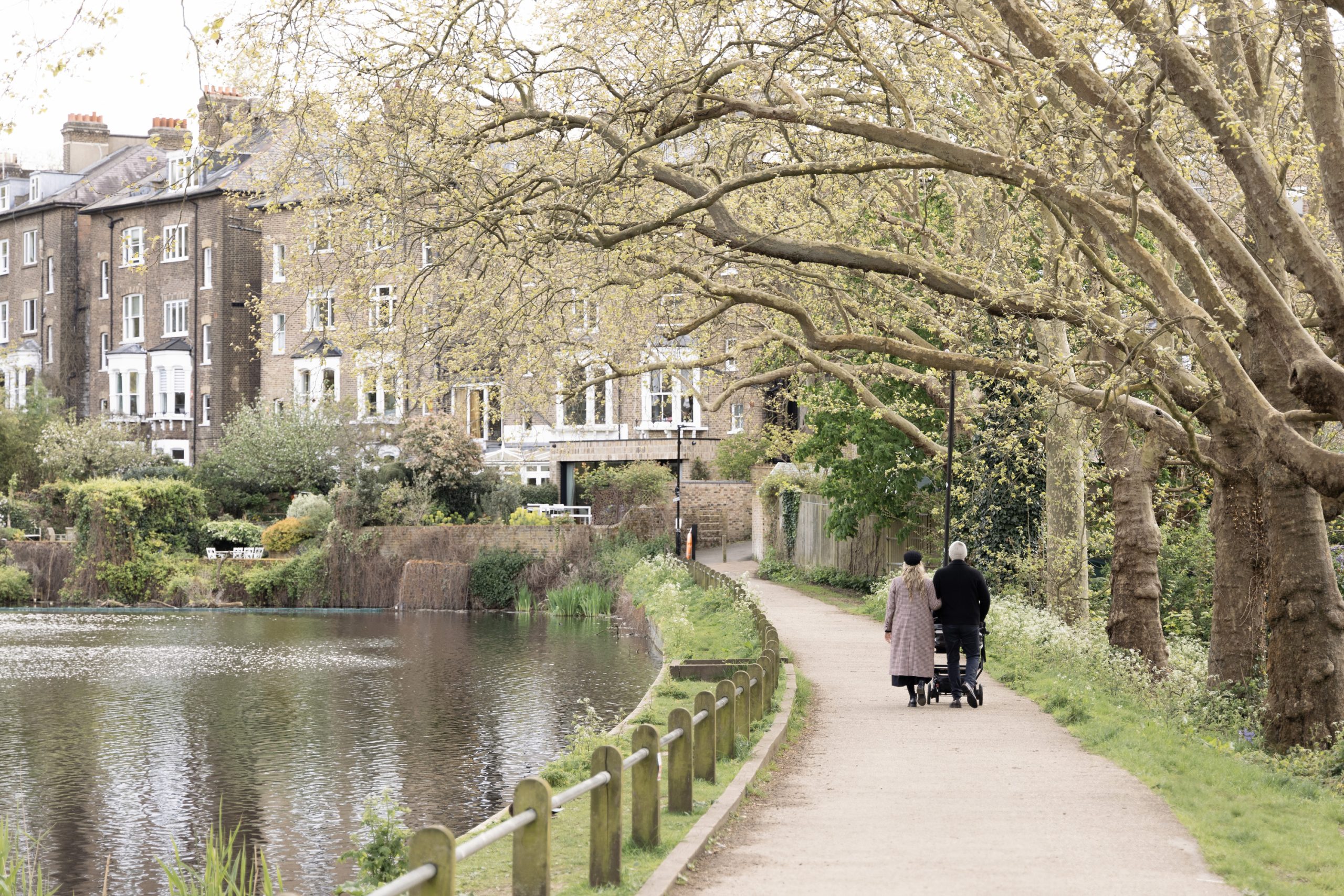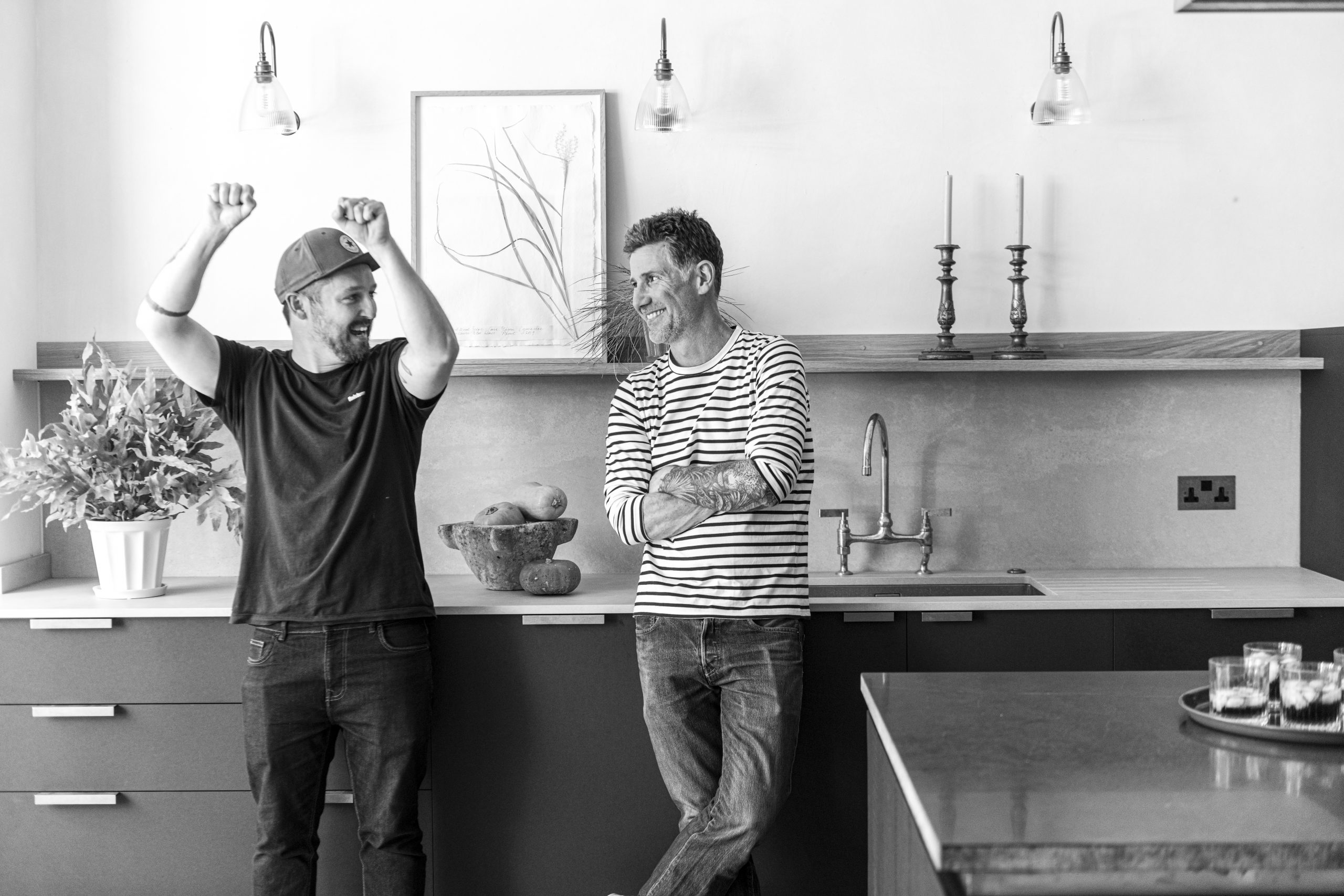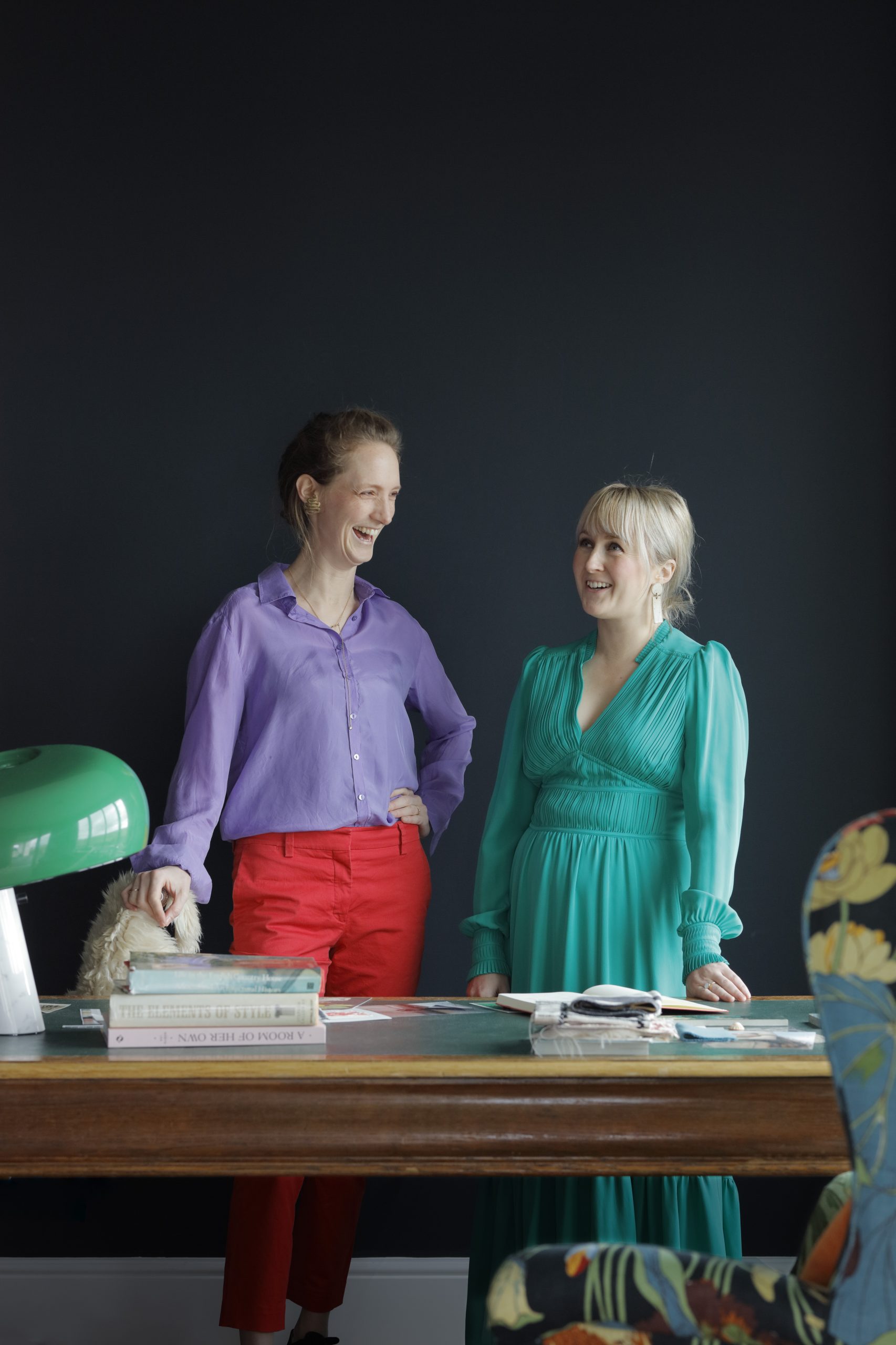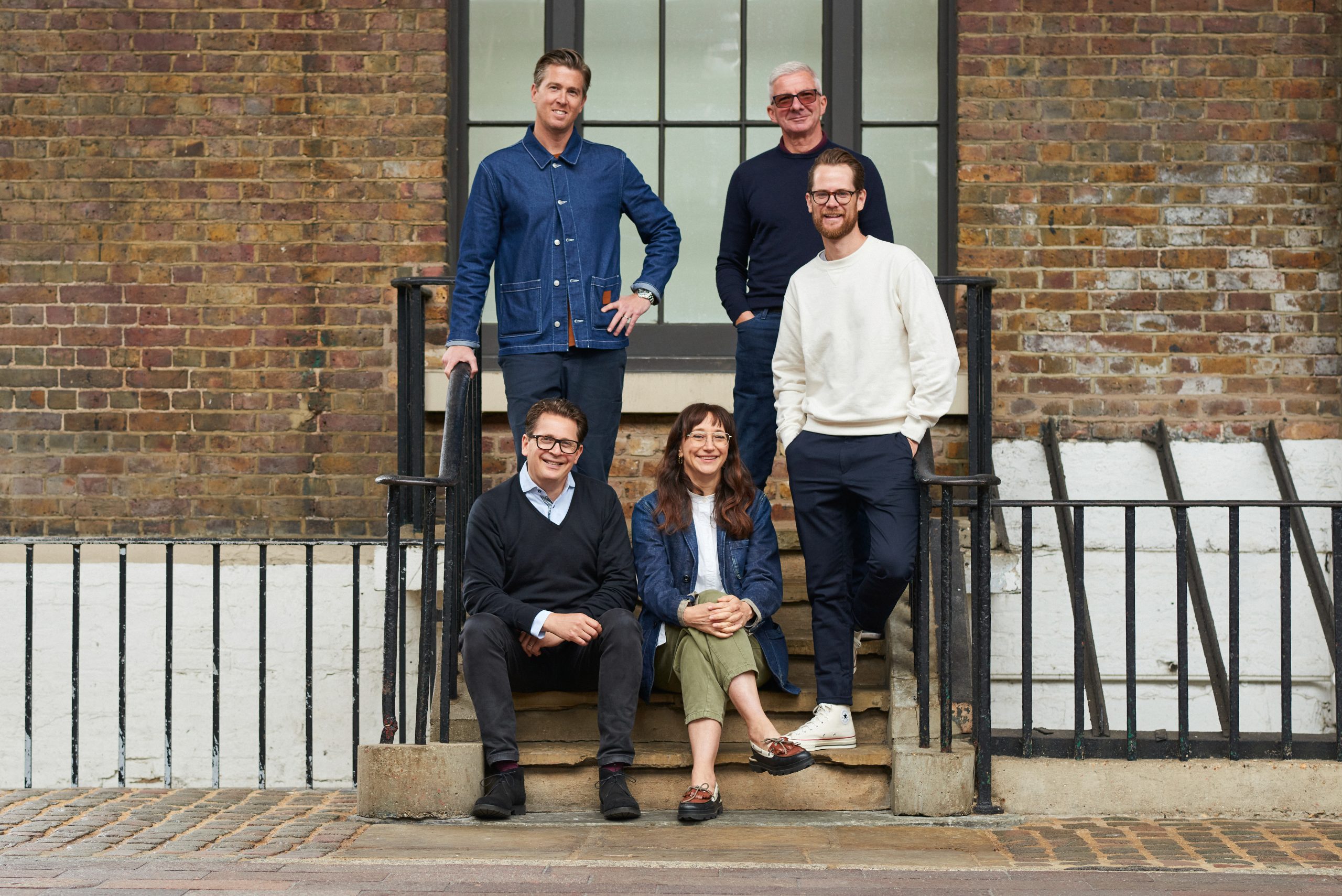Social Fabric.
Modest, funny, and the very definition of good-with-people, Matt and Alex, the founders of WEAR London, view the rise of their label as a happy accident.
Their natural affinity with their customers and sharing stories makes them kindred spirits with Story of Home. We had a cup of tea with them in their Shoreditch home and started by asking them to tell us how WEAR London came to be.
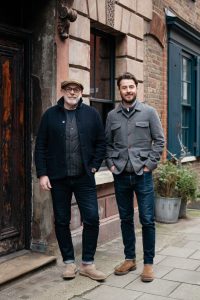
Founders Alex and Matt
“We’ve always made for several of the well-known brands that you associate with London,” Matt explains. “When COVID came the world stopped and we had to find something to keep the machinists in jobs as soon as they were allowed back to work. My friend in Italy had a load of fabric on his desk, three colours amounting to 180 metres. We decided to make some jackets, about 90 from that amount of fabric, split into three designs.”
“It was just a stop-gap, to keep the bums on the seats at the machines,” Alex says, “And Matt and I went around Shoreditch with the jackets we had made on, taking pictures and looking super-smooth and attractive.”
“We realized,” Matt says, “that we had missed our calling as supermodels. It’s a waste, really.”
Two years earlier, Alex had created an Instagram account for WEAR London which was a behind-the-scenes look at their work as a UK manufacturer, producing clothes for big brands. From the outset, followers would ask where they could get the pieces they made and Alex and Matt found themselves directing all these people away.
“We were constantly explaining to people who wanted to buy our clothing that we were not a brand,” Alex says. “That the clothes we designed and made were solely for our own use; the designs we made to show to our clients, the big brands, where we would say, why don’t you make something like this? Or, why don’t you use a fabric like that?”
That Instagram account now became the place for Matt and Alex to sell their 90 jackets. “We made them,” Matt said, “but we didn’t really know how to sell them. We hadn’t thought that far ahead.’
A friend of theirs had a pop-up shop in Stoke Newington with his own brand that Matt and Alex used to supply, and they asked him if they could put a rail in his shop. “The first week,” Matt says, “the rail sold out. Then we said, can we put a bit more in, so we did. Then we went to visit him one day and he’d hidden our rail out the back because our jackets were selling so well so he wasn’t selling his own stuff. We apologised and agreed we should move on!”
The boys then had three weeks at Broadway Market with another pop-up and the response to their jackets was so overwhelming that they began to think they might be on to something.

Broadway Market, the location of their first pop and our first introduction
“I suppose we’ve stumbled upon something, and we’ve run with it. That’s really the best way you can put it,” Matt says, modestly.
“We keep design fairly simple and that has really struck a chord,” Alex says.
“Buying the fabric from trusted suppliers who have known us for decades,” Matt says, “having the manufacturing capabilities and knowing the best way to make it, the most efficient way to make it, and then not being greedy in terms of a margin. You have to make a margin, but not being too greedy like some brands.”
So, who, we ask, is their customer? What is a WEAR London type of person?
Alex says, “There’s a good story from Broadway Market. People say to us, who’s your customer, and we used to say, we don’t really know. But now we tell them this true story.”
Matt’s eyes light up and he leans forward. “A guy walked in, a doctor, 50 years old, and he loved the jackets. The Pretender by Jackson Browne was playing in the shop, and he said, ‘This is my favourite song,’ and I said, ‘It’s my favourite song as well.’ He bought the jacket and phoned his brother up. ‘You’ve got to come over to this shop.’ So his brother came straight over and was looking at our stuff and the doctor says, ‘Mum and Dad will love this,’ and he goes off and comes back with his mum and dad ten minutes later. They are 93 and 94 and both of them are on Zimmer frames.
“We kitted the whole family out, two brothers and their mum and dad. The mum loved one of our men’s jackets on her. Next day, the carer of the mum and dad came in, and she said she wanted a man’s jacket just like the mum was wearing, so we sorted her out. Then the doctor returned with his son to buy a jacket and a week later the son came back in and said to us that he was being bullied at college and since he’d been wearing that jacket no one had bullied him, because it looked so good on him. “It’s my shield,” he said to us, and it makes me nearly cry thinking about it.”
“Six weeks later the doctor returns with his mum and dad. “It’s Dad’s 94th birthday. He wants a scarf, hat, shirt, trousers.” While we kitted his dad out, the doctor asked us to put on The Pretender and he sang it to his dad on his 94th birthday. There’s a line in the song that goes, ‘I’ll get up and do it again, Amen,’ and I had the Mum and Dad sing the ‘Amen’ and we were all crying with happiness. It was one of those wonderful moments that you never forget.”
“We love our customers,” Alex says, “but we’ve no idea how you define them, so maybe our customers are everyone.”
The boys moved from Broadway Market to Spitalfields, an area in which they have remained ever-present ever since, and which they call home. They moved around Shoreditch a bit before settling in their current locations on Brushfield Street and Hanbury Street. They added a Soho store in October 2023. “It’s fantastic to be on Berwick Street,” Matt says.

Shoreditch East London
That said, Shoreditch is the epicentre of London life for them both. “The place is so alive,” Alex says. “People going to work, people going out, there’s so much going on here. You’ve got great restaurants, you’ve got a great market, great art and shops, you’ve got everything.”
“I have always worked Saturdays here in the shop,” Matt says. “Because that for me is the best day of the week. The feedback you get is absolutely top quality. You cannot beat it. We love buying our fabric, designing our shapes and making, but actually getting feedback from the customer and talking to them on Saturdays makes it the best day of the week for me.”
“The thing we get back from clients,” Alex adds, “is them saying, ‘I get a lot of compliments wearing this.’ That’s what we hear all the time.”
Matt and Alex’s enthusiasm for their work and their love of London is undiluted, but they are also experts, with years of experience, on a serious mission to bring manufacturing back to the UK.
Matt, who might possibly be a month or two older than Alex, says, “I’ve been working with some of our suppliers and machinists for 40 years because it’s a commitment. It’s down to us to keep these guys busy 50 weeks of the year. You’ve got to support the factories. Without us supporting them they can’t support us and it’s a great USP for us I think to have the gear made in this country.”
“The three cornerstones of our brand,” Alex says, “are that it’s sustainable Italian fabric, it’s made in the UK and it’s affordable.”
The majority of the fabric WEAR buy is from Prato, near Florence; an old industrial town that is the zeitgeist of recycled fabric production, using fabric garnered from jumpers, suits, trousers, overcoats, any garments with a wool content. They are then compressed into bales and stripped back to fibres to produce what is called mechanical wool. Although the fibres are not as fine as virgin wool, they are able to be reintroduced to the production cycle without having to be dyed, saving the environment the impact of this process.

WEAR London, Spitalfields store
“As well as the sustainability of our fabric-buying, and our factory and shops being within a couple of miles of each other, the thing we are most proud to tell people about WEAR London is that we make in Britain,” Matt adds. “The factory is up the road, so if we want to see how production is going, we pop up there. We’re not perfect but we’ll always try and fix anything that’s not right and that is hard to do that when your factory is 5,000 miles away.”
WEAR no longer works with brands. They are competitors now. “You have to separate,” Alex says, “and we don’t want to give them our secrets anymore.”

